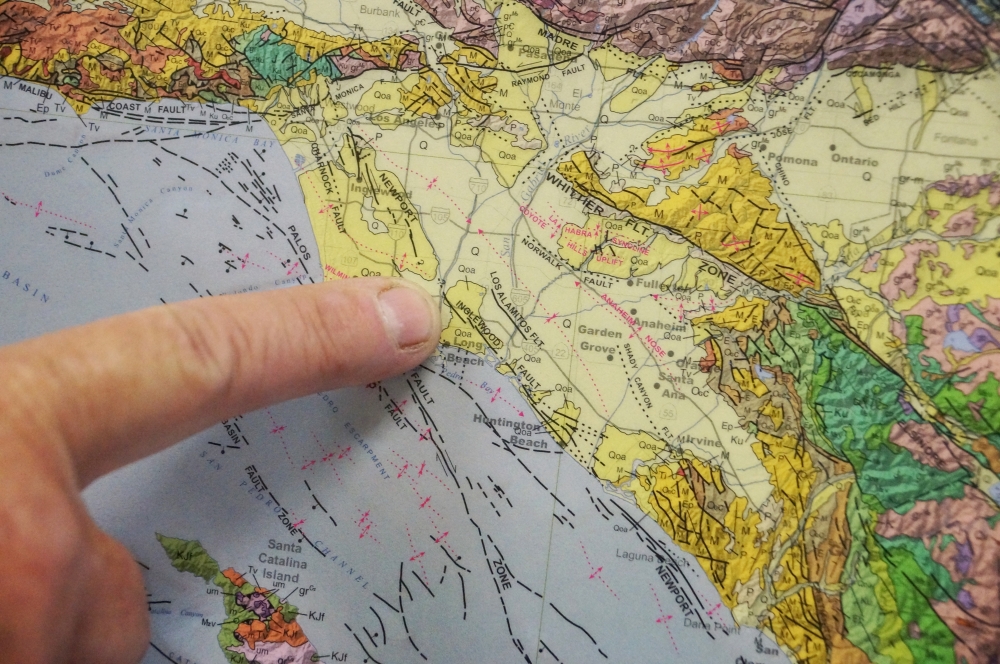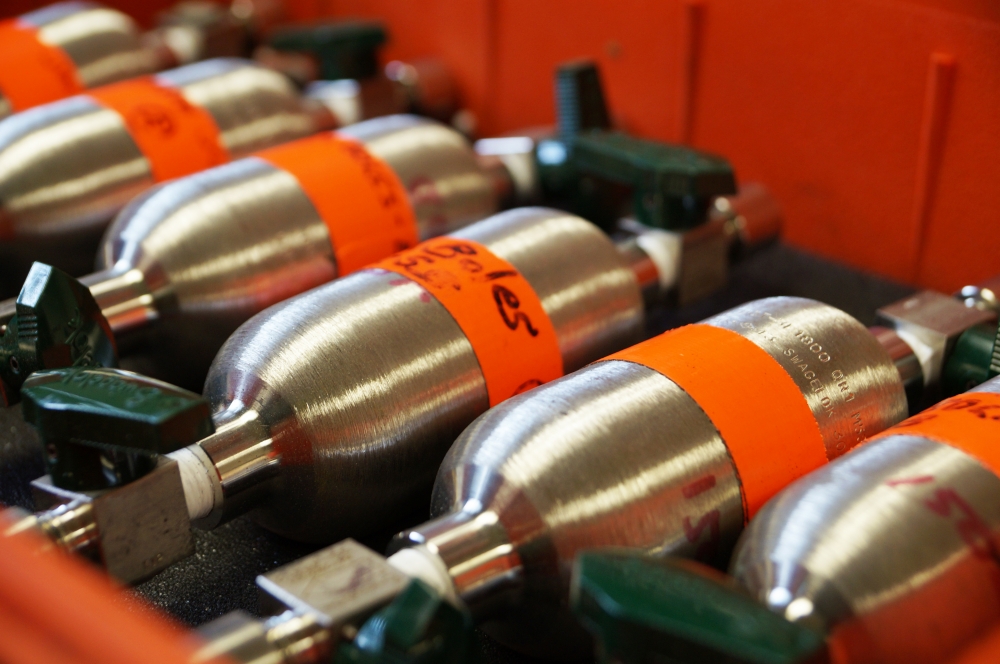Helium Leaking from Earth in Southern California

A natural helium leak in Southern California reveals that the Newport-Inglewood fault is deeper than once thought — with a direct line from the Earth's surface to the planet's hot, dense mantle.
Scientists have found high levels of helium-3 in oil wells up to 3 kilometers (1.8 miles) deep in Orange County, along a 30-mile (48 kilometers) stretch from Los Angeles' Westside to Newport Beach. Helium-3 comes only from the Earth's mantle, the semisolid rock layer beneath the crust.
"The fault, which I don't think people had anticipated, was deeply connected," said Jim Boles, a professor emeritus of earth sciences at the University of California, Santa Barbara.
The results have implications for the underground structure of the Los Angeles basin. Geologists believed the area to be underpinned by a low-angle thrust fault, but the Newport-Inglewood fault appears to plunge down deep, Boles told Live Science. [In Photos: Ocean Hidden Deep in Earth's Mantle]
What the study does not do — despite some breathless media coverage otherwise — is alter earthquake predictions about southern California.
Hot rock
Discovering helium-3 at the Newport-Inglewood fault is undeniably odd. About 30 million years ago, the fault was the site of a subduction zone, a region in which one continental plate is pushing under another, driving a layer of crust down toward the mantle like a conveyer belt. Boles and his colleagues found a layer of a metamorphic rock called blueschist at the bottom of deep wells in the Newport-Inglewood fault zone. The minerals in blueschist form only in very particular conditions in which rock gets pushed deep underground and then rapidly resurfaces, before having time to "cook" under the high temperatures deep in the crust, according to the U.S. Geological Survey. These conditions exist in subduction zones.
Sign up for the Live Science daily newsletter now
Get the world’s most fascinating discoveries delivered straight to your inbox.

But subduction zones are not typically places where high levels of helium-3 are found, Boles said. Helium anomalies are most often found in spreading centers in the deep ocean, where the Earth's crust is pulling apart, or in volcanic hotspots such as the Hawaiian islands or Yellowstone National Park, where the hot mantle gets close to the Earth's surface.
The Newport-Inglewood fault "could have had a connection" to the mantle 30 million years ago when it was an active subduction zone, Boles said, "but the fact that the connection looks like it's still there is pretty interesting."
Complicated faults
What the new findings suggest is that the Newport-Inglewood fault runs deep. A previous hypothesis held that the LA Basin was underpinned by a low-angle thrust fault, but this study contradicts that notion, Boles said. Essentially, the underground structure of the region may be far different than once thought.
Despite scattered news reports linking the new findings to an earlier USGS report that raised the risk of a large quake in the next three decades from about 4.7 percent to 7 percent, the helium discovery at the Newport-Inglewood fault is not cause for panic. The discovery does not speak to the seismicity of the region, Boles said, and a lot more data is needed to even determine the implications of the findings for the area's geologic structure.
"The only thing you can say is that this fault looks like it's a more significant fault than people thought in terms of how deep it goes and what it communicates with," Boles said.
The researchers reported their findings in the online journal Geochemistry, Geophysics, Geosystems, also known as G-Cubed.
Follow Stephanie Pappas on Twitterand Google+. Follow us @livescience, Facebook& Google+. Original article on Live Science.

Stephanie Pappas is a contributing writer for Live Science, covering topics ranging from geoscience to archaeology to the human brain and behavior. She was previously a senior writer for Live Science but is now a freelancer based in Denver, Colorado, and regularly contributes to Scientific American and The Monitor, the monthly magazine of the American Psychological Association. Stephanie received a bachelor's degree in psychology from the University of South Carolina and a graduate certificate in science communication from the University of California, Santa Cruz.










